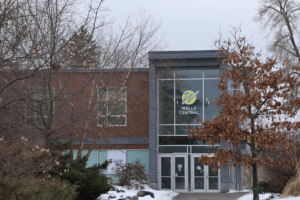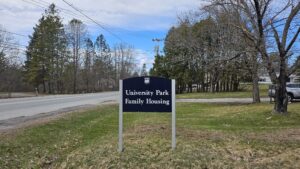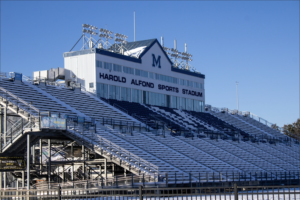As Nov. 6 has loomed over America for the past few months and as it now comes hurtling towards us, it has been impossible to avoid vicious attack ads and biased news from all directions. This onslaught of opinion and twisted narratives can be a huge issue for college students who already have a difficult time making it out to the polls, let alone making an informed decision about who represents them on the local and national stage. In such a climate, public radio stations stand as necessary emblems of ethical, fact-based reporting across the nation. The issue lies in both the number of youth voters that show up to the polls and the number that consume information through relatively unbiased sources like Public Radio are disappointingly low.
Unfortunately, there is a stigma surrounding those that regularly listen to National Public Radio news programs such as “Morning Edition or All Things Considered:” that stigma being that they are all old. That’s because, for the most part, it’s true. According to research by the Station Resource Group, the median age of public radio listeners has gone up from 45 to 54 in the past two decades. This is largely due to a loyal audience of baby boomers. National Public Radio was first established in 1971, and listeners that grew up with it have stayed loyal to it. As a result of courting this bubble of listeners, public radio has thus developed an archaic reputation, despite the best efforts of NPR to appeal to young individuals with a Pandora-esque app called “NPR One” and other social media outreach.
Due to public radio’s connotations and aging medium, many young prospective voters are missing out on a valuable source that they already pay for. Federal tax dollars help to fill out the annual budgets of nearly 900 public stations, but that funding is not nearly enough. NPR and other stations pay for their journalists and high quality programs and podcasts primarily through money from individual donation or underwriting (underwriting being a heavily restricted and unbiased form of advertising). By not taking money from major corporations or interests, NPR and local stations are able to follow through on their mission “to create a more informed public” through “public service in journalism and cultural expression.”
While this isn’t to say that college students can’t think for themselves, there does seem to be an evident struggle in the demographic to discern between real and fake news. A study published by Stanford researchers, in which 7,800 responses from 12 states were collected, found that less than one-third of college students could recognize a source with a clear political agenda as insubstantial. In addition, it was found that in a group of Stanford undergrads, more than half determined that a mainstream medical journal publisher was a less reliable source than a fringe hate group going by a similar name. Again, this isn’t to give the impression that all college students are uninformed and need to be told what a reliable source is, but just that it can be incredibly difficult, especially considering the state of social media as a new source, to discern between what’s real and what’s fake or biased.
At the end of the day, NPR and local public radio stations need donations from listeners to produce their high quality programs. If the baby boomer audience simply ages out and disappears, then an extremely valuable resource for information and entertainment will go with it. In our time of instability and uncertainty concerning reporting, that would be a grave sign of a continuing decline. And with respect to complaints about the dry nature of “All Things Considered,” I think NPR CEO Jarl Mohn put it well when he said, “look, your story-telling is great … It’s charming. But we’re covering Syria. We’re covering Ebola.”



